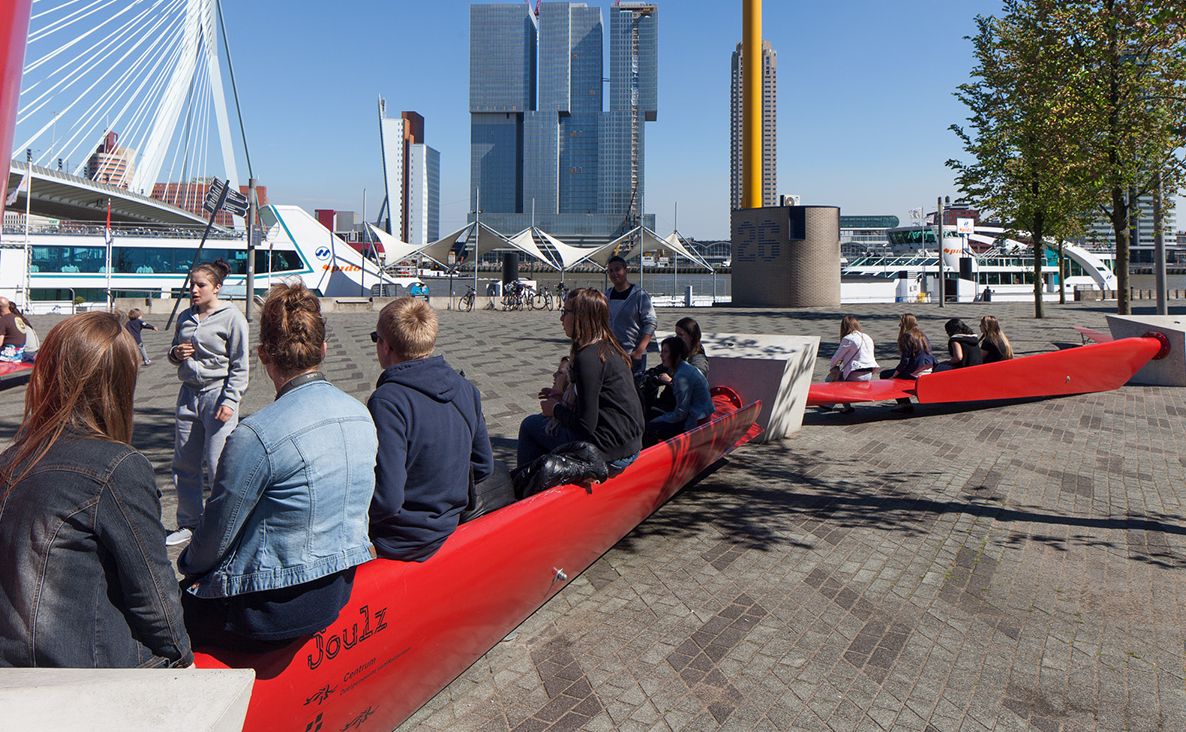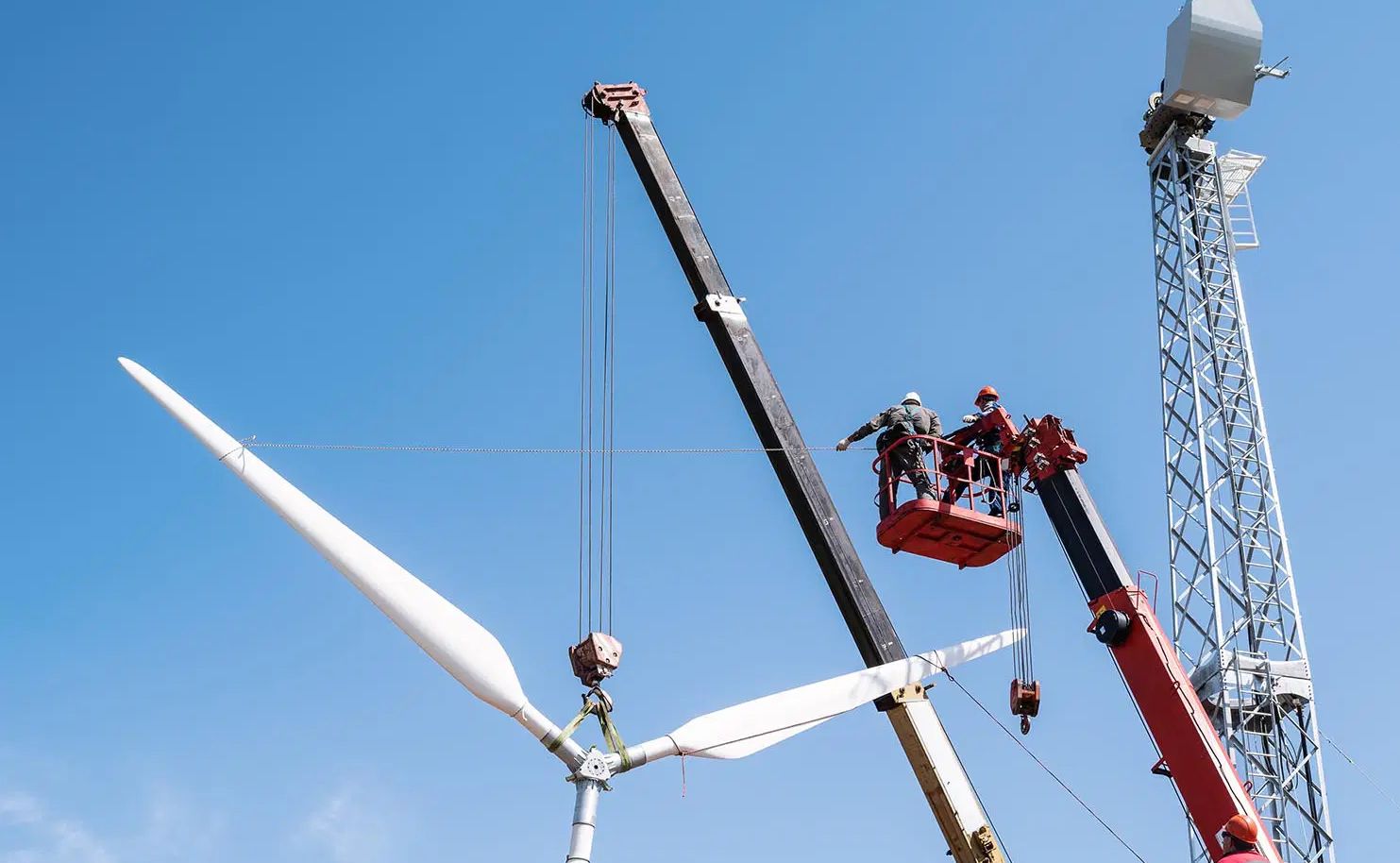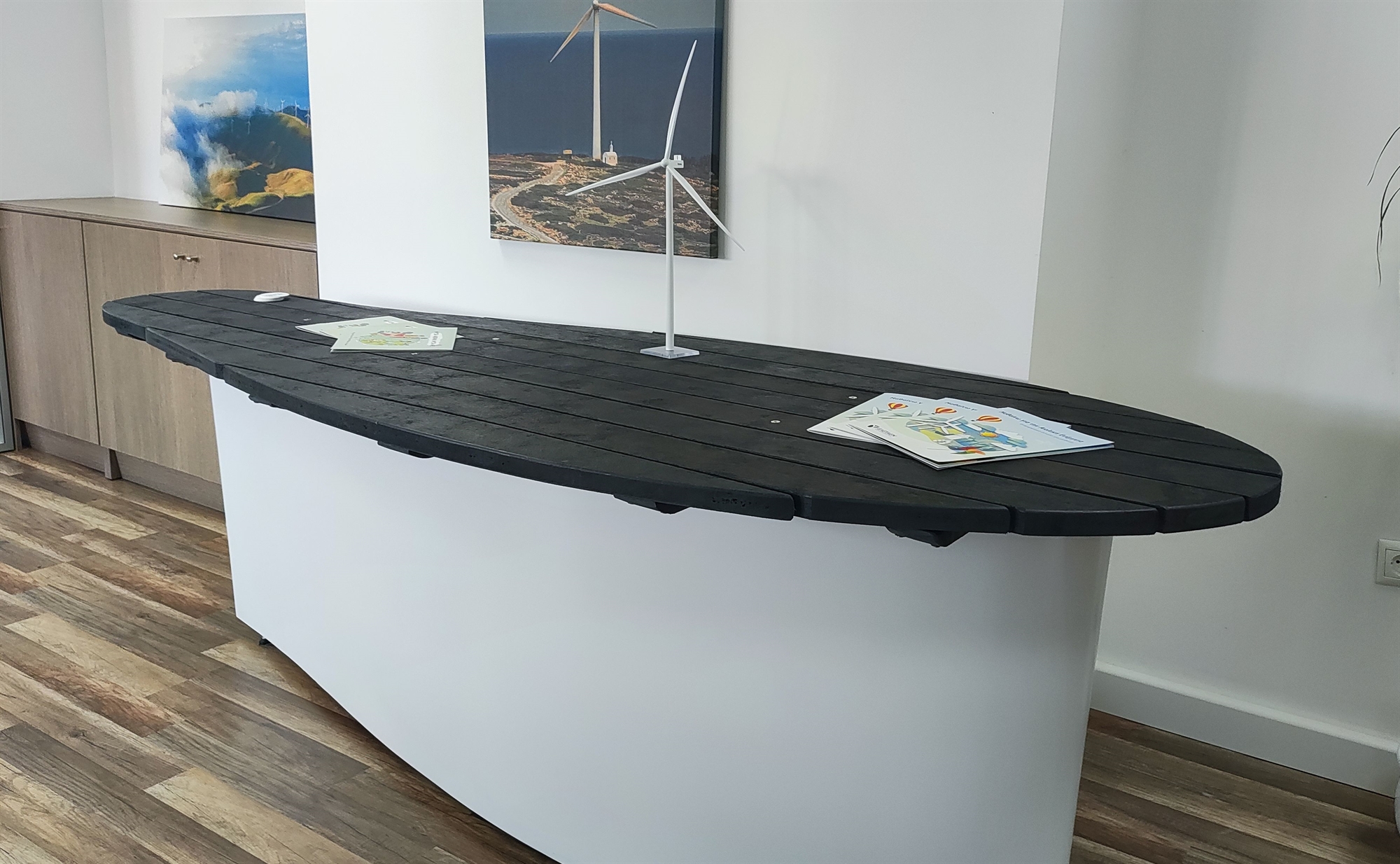
The life cycle of the first wind turbines installed in Greece in the 1990s is coming to an end and companies will have to, on the one hand, ensure the continuity of the most efficient wind farms, which were the first to “hook” the best positions in terms of wind potential and network, and on the other hand, a huge amount of equipment to be removed.
As for the first one, the continuation of the operation of the parks, the solution is simple: “reconfiguration”, i.e. replacement of old windmills with new technologies with higher efficiency, followed for a decade by the most mature markets in Europe. and it was also first implemented in Greece by PPC Renewables, a subsidiary of PPC, which, as CEO of the parent company, installed the first wind turbines in the Greek islands in 1992.
As for the second problem related to the decommissioning of old wind turbines, the big problem in Europe is the blades. Today, 85-90% of the mass of wind turbines is effectively recycled, with the exception of the blades due to the synthetic materials they contain. WindEurope expects that about 25,000 tons of blades will reach the end of their life each year by 2025, and the annual decommissioning volume could double to 52,000 tons by 2030.
The use of wind turbine blades for the production of urban equipment is part of the management of decommissioned wind farms in Europe, which complements the “changeover”. Benches, flowerpots, sheds, offices, playgrounds, bus shelters, information kiosks, bicycle frames made from aging wind turbine blades are the new trend in hand-crafted urban equipment… European wind energy, followed closely by the Greeks.
The wind industry is committed to 100% recycling of aging wind turbines.
In Rotterdam, children play on playgrounds made of wind turbine blades, and in the squares of many European cities there are more and more bench blades.
In Greece, the offices of ELETAEN (Greek Scientific Association of Wind Energy) are decorated with tables and other furniture made from the blades of the first wind farms installed by PPC in the early 90s, which have completed their life cycle. The fins were placed on Christmas Day in the Children’s Village of Trikkaya Municipality, and the fin forms the backbone of the office of PPC Renewables Managing Director Konstantinos Mavros, a wholly owned subsidiary of PPC, which has completed the first “reconfiguration” cycle. in Greece. Actually, in the near future in Greece we will see many types of urban equipment from manual windmills… ELETAEN. ELETAEN general manager Panagiotis Papastamatiou told K that the organization has already contacted factories and is collaborating with Intrakat and Vestas to produce urban equipment from wind turbine blades that will be provided to municipalities and other organizations.
However, it is clear that the reuse of fins in this sector cannot cover the huge volume of retiring fins and those that will follow. Part of the wings was removed by PPC Renewables, the Director of the Operational and Production Department of PPC Renewables RES Projects and a member of the Board of Directors emphasizes in K. from ELETAEN, Angelos Kasimis ends up in the cement industry, where it is mixed with the fuel they burn for their work. “The ribs are received by certified companies – the largest of them is in Ritson – they grind them up and turn them into a kind of powder that is sent to the industry for free to be burned,” he emphasizes. Wind power is committed to 100% recycling of wind turbines, and in this context, manufacturing companies, Mr. Papastamatiou emphasizes, have planned to develop new methods for recycling existing blades, as well as developing new materials so that new blades are easily and efficiently recycled. The first research program is developed by Vestas and the second by Siemens Gamesa.
In Europe, while legislation allows for the disposal of non-toxic waste, no company uses it, and there are no wind turbine “graveyards” like the ones we see online in the US, industry officials say. And to the question of a part of society about the “green identity” of wind farms due to the non-recyclable blades, they answer: “There is a cost problem, but it’s unfair to say that it changes the green identity.” wind power plants. They cite estimates by the European Synthetic Materials Industry Association (EuCIA) that “by 2025, wind power – despite even greater growth expected in the coming years – will provide 10% of synthetic waste worldwide. The largest percentage of synthetic materials will come from the construction sector, as well as from electronic and electrical devices.”



Their removal and replacement on the islands is complex and difficult.
PPC Renewables carried out the first retrofit in Greece, replacing 106 wind turbines with 22 new technologies at 10 wind farms installed in the 90s in Psara, Chios, Ikaria, Lesvos, Karpathos, Lemnos, Evia and Crete.
Angelos Kasimis, PPC Renewables Director of Operations and Operations for Renewables, describes this as a big challenge for K, a process as complex and responsible as building a wind farm. “It was an uncharted area that was approached methodically, and now it’s standard procedure for us,” he says, describing a number of problems they had to deal with managing dismantled equipment, since most of the parks were scattered on small islands. “Not all islands had suitable certified recycling facilities and we had to transport them to other islands or to the mainland system. This requires planning, which also depends on weather conditions, routes and availability of vessels, the ability to charter a private vessel on your own,” he emphasizes, also pointing out the lack of suitable workshops, since the needs of these projects require expertise. According to Mr. Kasimis, the reconstruction process begins with an initial accessibility check, as many things may have changed in road construction since the 1990s. This is followed by the stripping stage, i.e. the removal of old equipment, starting from the visible parts, everything above the foundation (pillars, ribs, contact network, etc.), and then invisible infrastructures, i.e. foundations, possible basements, wells and finally, the restoration of the landscape to its former state, as prescribed by law.
From here begins the most difficult part of transporting materials to the facilities of certified companies for their management, which was not on the small islands. According to Mr. Kasimi, the companies taking control have three options: the first is to sell them on the secondary market, where there is demand from countries whose institutional framework allows the installation of old wind turbines. The second is to remove the parts (box, generator, shaft, etc.) and make them available as spare parts for similar types of wind turbines. The third control option concerns the fins, which are crushed by certified companies into a kind of powder that is burned through pipelines in cement plants.
Source: Kathimerini
Lori Barajas is an accomplished journalist, known for her insightful and thought-provoking writing on economy. She currently works as a writer at 247 news reel. With a passion for understanding the economy, Lori’s writing delves deep into the financial issues that matter most, providing readers with a unique perspective on current events.